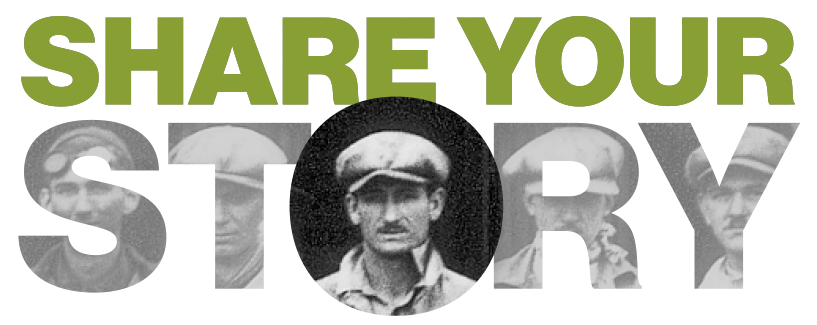In 1929 the Cessna Aircraft Company was riding a wave of prosperity that far exceeded Clyde V. Cessna’s wildest imagination. The American economy was going gangbusters, fed in large part by an unregulated, out-of-control stock market and a never-ending stream of reckless, get-rich-quick investors.
Customer orders for the new Cessna Model AA, Model AW and Model BW cabin monoplanes were flowing into the office, and Mr. Cessna was working feverishly to obtain Approved Type Certificates from the United States Department of Commerce for all three aircraft so full-rate production could commence. The Wichita airframe manufacturer’s ability to produce those ships, however, was severely hampered by woefully inadequate facilities at the First Street and Glenn Avenue factory that encompassed only 18,000 square feet.
To boost production to a level that could begin to meet demand, Cessna’s management team worked for months to obtain land suitable for construction of a multi-unit, modern airplane factory. Finally, in March 1929, company officials announced plans to build facilities on 80 acres of virgin prairie known locally as the Herman P. Jacobs tract. It was located in what Wichitans called the “California Section” – a large parcel of land southeast of town.

Plans included six buildings totaling 55,000 square feet of floor space. Two units would would measure 75 feet wide by 180 feet in length, while the another three would be 75 x 100 feet. A two-story office building (48 x 52 feet) would be erected adjacent to the main complex, along with a water tower holding 100,000 gallons. All of the units would be of brick and steel construction. Unite “A” would house experimental workshops; “B” enclosed sheet metal fabrication, and woodworking was assigned to “C.” Unit “D,” however, was built away from the other structures because it housed highly flammable nitrate dope as well as multiple paint booths. Last, the sleek monoplanes with their full-cantilever wings would be assembled and prepared for test flights in Unit “E.” Local newspapers reported that the entire campus would cost Cessna $200,000 – a fantastic sum in those days!
Cessna’s board of directors, having been given complete authority by stockholders to “get the factory built” quickly, chose Wichita’s W.S. Henrion Construction Company to do the work. Clearly, time was of the essence because Cessna’s largest customer, the Curtiss Flying Service (CFS), was clamoring for hundreds of Clyde’s speedy monoplanes but could obtain only a handful each month. Ground breaking ceremonies occurred on March 25, with Hugo A. Kenyon, representative of the Shawmut Corporation responsible for overseeing their financial interest in the Cessna Aircraft Company, turning the first spade of prairie soil as local dignitaries and board members witnessed the memorable event.
Meanwhile, as Henrion workers expedited construction of the new campus, 50 workers at the original Cessna factory downtown were laboring in shifts to build and deliver Model AW ships to CFS dealers. Four months later, the old facility was barely managing to build five monoplanes per week, but Curtiss was demanding as many as 25 ships to meet demand and a night shift was planned that would boost production to an unheard of 40 monoplanes per week. By June 1929, Curtiss officials had signed contracts for 545 airplanes (Model AW, DC-6A and DC-6B) worth an estimated $5.5 million.
It is interesting to note at this point that throughout 1928 and well into 1929, Wichita’s airframe manufacturers were building airplanes at unprecedented rates. Travel Air, for example, was struggling to produce 50 ships each week in June 1929 (an impossible rate it never achieved). The Stearman Aircraft Company and Swallow Aircraft, too, were facing strong demand for their biplanes but were hampered by inadequate production facilities. In the summer of 1929 Wichita could boast of 16 airframe factories and six companies building engines. In addition, investors had poured more than $10 million into the city’s aviation industry.
Unfortunately, just as Clyde Cessna was about to realize his dream of mass producing monoplanes of his own design, Wall Street collapsed in October 1929. The sudden, uncontrolled and massive selloff of aeronautical stocks swiftly crucified sales of new aircraft nationwide. By that time Clyde’s company had delivered only 37 Model AW, four DC-6 and three DC-6A cabin ships to CFS. Almost overnight, a financially crippled Curtiss Aircraft Company pulled the plug on its contracts for hundreds of Cessna ships, leaving the pioneer aviator to stare at a pool of deepening red ink.
By Christmas 1929, Cessna stock had plummeted to only $12 per share from a high of $100 that summer, and aviation magazines across America carried advertisements for new aircraft selling at less than half of their original price, but there were few takers. The commercial airplane bubble had truly burst, and Wichita’s infant aircraft industry took a terrible, almost fatal beating. As for Mr. Cessna, he was left to ponder what the future may hold, but one fact was certain: The year 1930 would bring with it an uphill battle for survival of the company bearing his name.

 Back
Back